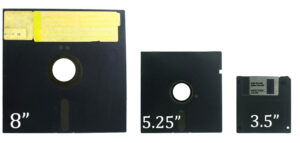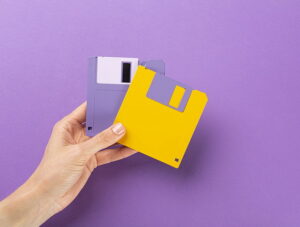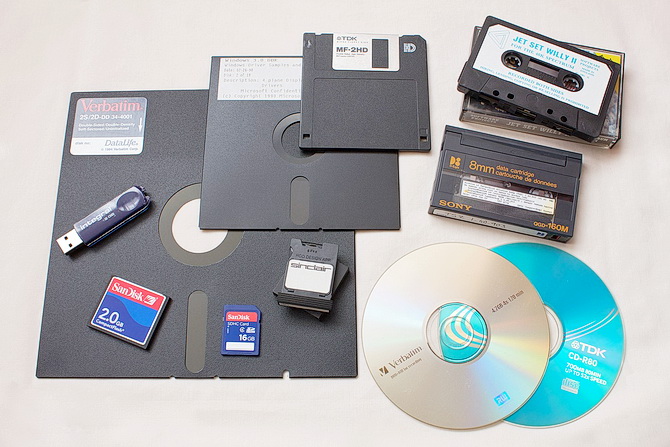A Bit of Data Storage History
As computers gained momentum in the 1980s, the need to store information on a mobile platform was intensifying. Floppy disks were the first portable devices that were invented. They were invented by a team of IBM engineers led by Alan Shugart in 1971 but they didn’t gain popularity until the early 1980s. The disks were very light in weight and would “flop” if you waved them; hence, ‘floppy disks.’

They were large 8″ in diameter disks and could store a maximum of 100 KB of data. That’s about 10 full pages of words plus maybe a few small pictures. So if you had a thesis to write or hundreds of pictures to save, you would have been out of luck.

In 1981, the 3.5-inch floppy disk was introduced, which stored up to 1.44 MB of data. They were hard disks, meaning that they didn’t “flop” but their storage capacity was over 100 times more than the 8″ floppy disks that were initially created.
Floppy Disk Issues
Floppy disks were not without their flaws. They were susceptible to damage from magnets and dust, and could easily be corrupted by physical damage or exposure to heat. They were also slow, with read and write speeds that could be frustratingly slow for users.Despite these limitations, these disks played an important role in the history of computing. They enabled the widespread distribution of software and documents and helped establish the personal computer as a powerful tool for individuals and small businesses.
Today, floppy disks are essentially a relic of the past, but their impact on computing history cannot be overlooked.
The Introduction of the Compact Disk
By the early 2000s, floppy disks were being phased out as other storage options, such as CDs were becoming more popular and they were a revolution in data storage capacity. From 1.44 MB of the 3.5,” floppies came 50 megabytes (MB) to 700 MB of data storage on a CD.
This capacity not only allowed users to store text and image data but also music and videos.
Enter the Flash Drive, AKA USB
Not to be confused with USB cables, these are plastic devices, about an inch long that plug into the USB port, the same port that those cables connect to.
A typical flash drive is a hard plastic device about the size of your thumb, which is why they are sometimes called thumb drives. Their storage capacity blows away any of their predecessor’s CDs or floppies with storage starting with 4 GB up to 256 GB. That is over 1,000 times more storage space than the first hard drives that came onto the market.

